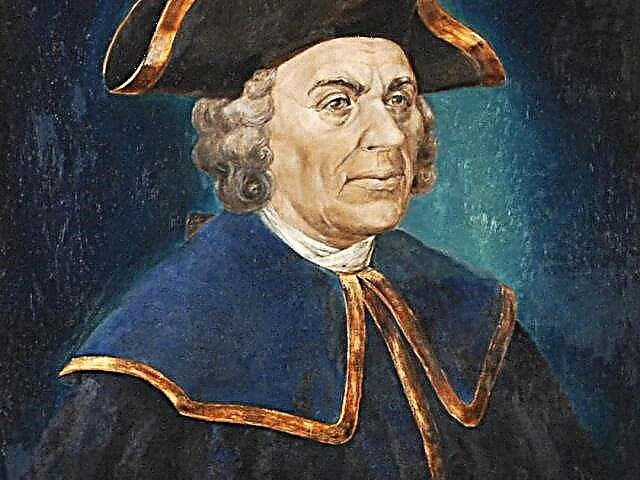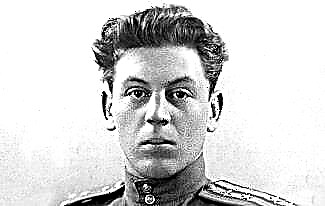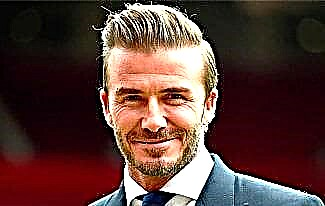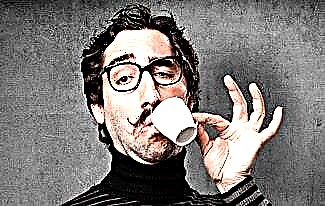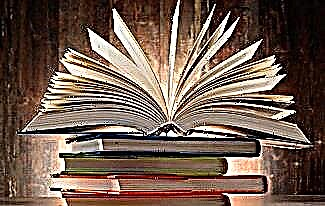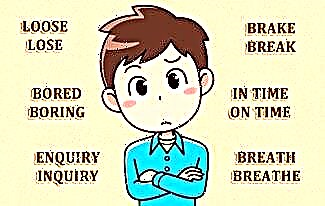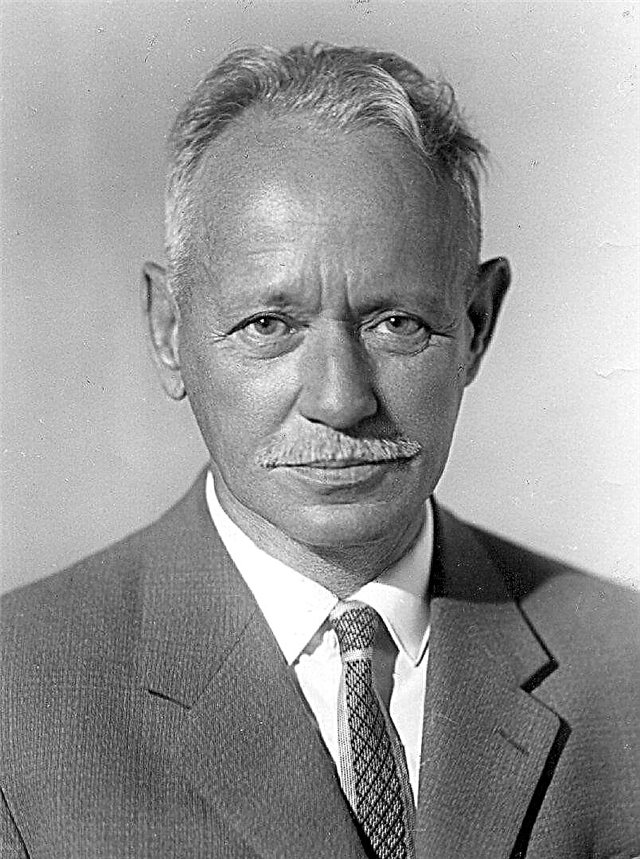Leonard Euler (1707-1783) - Swiss, German and Russian mathematician and mechanic, who made a huge contribution to the development of these sciences (as well as physics, astronomy and a number of applied sciences). During the years of his life he published over 850 works related to various fields.
Euler deeply researched botany, medicine, chemistry, aeronautics, music theory, many European and ancient languages. He was a member of many academies of sciences, being the first Russian member of the American Academy of Arts and Sciences.

There are many interesting facts in the biography of Leonard Euler, which we will talk about in this article.
So, here is a short biography of Euler.
Biography of Leonard Euler
Leonard Euler was born on April 15, 1707 in the Swiss city of Basel. He grew up and was raised in the family of Pastor Paul Euler and his wife Margareta Brooker.
It is worth noting that the father of the future scientist was fond of mathematics. During the first 2 years of his studies at the university, he attended courses of the famous mathematician Jacob Bernoulli.
Childhood and youth
The first years of Leonard's childhood were spent in the village of Ryhen, where the Euler family moved shortly after the birth of their son.
The boy received his primary education under the guidance of his father. It is curious that he showed mathematical abilities early enough.

When Leonard was about 8 years old, his parents sent him to study at the gymnasium, which was located in Basel. At that moment in his biography, he lived with his maternal grandmother.
At the age of 13, the talented student was allowed to attend lectures at the University of Basel. Leonard studied so well and quickly that he was soon noticed by Professor Johann Bernoulli, who was the brother of Jacob Bernoulli.
The professor provided the young man with a lot of mathematical works and even allowed him to come to his house on Saturdays to clarify difficult to understand material.
A few months later, the teenager successfully passed the exams at the University of Basel at the Faculty of Arts. After 3 years of study at the university, he was awarded a master's degree, giving a lecture in Latin, during which he compared Descartes' system with Newton's natural philosophy.
Soon, wishing to please his father, Leonard entered the theological faculty, continuing to actively study mathematics. An interesting fact is that later Euler Sr. allowed his son to link his life with science, since he was aware of his giftedness.
At that time, Leonard Euler's biographies published several scientific papers, including the "Dissertation in Physics on Sound". This work participated in the competition for the vacant position of professor of physics.
Despite the positive reviews, 19-year-old Leonard was considered too young to be entrusted with the professorship.
Soon, Euler received a tempting invitation from representatives of the St. Petersburg Academy of Sciences, which was just on its way to becoming and was in dire need of talented scientists.
Scientific career in St. Petersburg
In 1727, Leonard Euler came to St. Petersburg, where he became an adjunct in higher mathematics. The Russian government allocated him an apartment and set a salary of 300 rubles a year.
The mathematician immediately began to learn Russian, which he could master in a short time.

Euler later became friends with Christian Goldbach, the permanent secretary of the academy. They conducted an active correspondence, which is today recognized as an important source on the history of science in the 18th century.
This period of Leonard's biography was unusually fruitful. Thanks to his work, he quickly gained worldwide fame and recognition from the scientific community.
The political instability in Russia, which progressed after the death of Empress Anna Ivanovna, forced the scientist to leave St. Petersburg.
In 1741, at the invitation of the Prussian monarch Frederick II, Leonhard Euler traveled with his family to Berlin. The German king wanted to found an academy of sciences, so he was interested in the services of a scientist.
Work in Berlin
When his own academy opened in Berlin in 1746, Leonard took over as head of the mathematical department. In addition, he was entrusted to monitor the observatory, as well as to solve personnel and financial issues.
Euler's authority, and with him material well-being, grew every year. As a result, he became so rich that he was able to buy a luxury estate in Charlottenburg.
Leonard's relationship with Frederick II was hardly simple. Some biographers of the mathematician believe that Euler held a grudge against the Prussian monarch for not offering him the post of president of the Berlin Academy.
These and many other actions of the king forced Euler to leave Berlin in 1766. At that time he received a lucrative offer from Catherine II, who had recently ascended the throne.
Return to St. Petersburg
In St. Petersburg, Leonard Euler was greeted with great honors. He was immediately given a prestigious post and were ready to fulfill almost any of his requests.
Although Euler's career continued to develop rapidly, his health left a lot to be desired. The cataract of the left eye, which bothered him back in Berlin, progressed more and more.
As a result, in 1771 Leonard underwent an operation, which led to an abscess and virtually completely deprived of his sight.

A few months later, a serious fire broke out in St. Petersburg, which also affected Euler's dwelling. In fact, the blind scientist was miraculously saved by Peter Grimm, an artisan from Basel.
By personal order of Catherine II, a new house was built for Leonard.
Despite many trials, Leonard Euler never stopped doing science. When he could no longer write for health reasons, his son Johann Albrecht helped mathematics.
Personal life
In 1734, Euler married Katharina Gsell, the daughter of a Swiss painter. In this marriage, the couple had 13 children, 8 of whom died in childhood.
It is worth noting that his first son, Johann Albrecht, also became a talented mathematician in the future. At the age of 20, he ended up in the Berlin Academy of Sciences.
The second son, Karl, studied medicine, and the third, Christoph, linked his life with military activities. One of the daughters of Leonard and Katarina, Charlotte, became the wife of a Dutch aristocrat, while the other, Helena, married a Russian officer.
After acquiring the estate in Charlottenburg, Leonard brought his widowed mother and sister there and provided housing for all his children.
In 1773, Euler lost his beloved wife. After 3 years, he married Salome-Abigail. An interesting fact is that his chosen one was the half-sister of his late wife.
Death
The great Leonard Euler died on September 18, 1783 at the age of 76. The cause of his death was a stroke.
On the day of the scientist's death, on his 2 slate boards, formulas describing a flight in a balloon were found. Soon the Montgolfier brothers will make their flight in Paris on the balloon.

Euler's contribution to science was so extensive that his articles were researched and published for another 50 years after the death of the mathematician.
Scientific discoveries during the first and second stays in St. Petersburg
During this period of his biography, Leonard Euler deeply studied mechanics, music theory and architecture. He published about 470 works on a variety of topics.
The fundamental scientific work "Mechanics" covered all areas of this science, including celestial mechanics.
The scientist studied the nature of sound, formulating a theory of the pleasure caused by music. At the same time, Euler assigned numerical values to the tone interval, chord, or their sequence. The lower the degree, the higher the pleasure.
In the second part of "Mechanics" Leonard paid attention to shipbuilding and navigation.
Euler made invaluable contributions to the development of geometry, cartography, statistics and probability theory. The 500-page work "Algebra" deserves special attention. An interesting fact is that he wrote this book with the help of a stenographer.
Leonard deeply researched the theory of the moon, naval sciences, number theory, natural philosophy and dioptrics.
Berlin works
In addition to 280 articles, Euler published many scientific treatises. During the biography of 1744-1766. he founded a new branch of mathematics - the calculus of variations.

From under his pen came out treatises on optics, as well as on the trajectories of planets and comets. Later Leonard published such serious works as "Artillery", "Introduction to the analysis of the infinitesimal", "Differential calculus" and "Integral calculus".
During all his years in Berlin, Euler studied optics. As a result, he became the author of the three-volume book Dioptrics. In it, he described various ways to improve optical instruments, including telescopes and microscopes.
System of mathematical notation
Among the hundreds of Euler's developments, the most notable is the representation of the theory of functions. Few people know the fact that he was the first to introduce the notation f (x) - the function "f" with respect to the argument "x".
The man also deduced the mathematical notation for trigonometric functions as they are known today. He authored the symbol "e" for the natural logarithm (known as "Euler's number"), as well as the Greek letter "Σ" for the total and the letter "i" for the imaginary unit.
Analysis
Leonard used exponential functions and logarithms in analytic proofs. He invented a method by which he was able to expand logarithmic functions into a power series.
In addition, Euler used logarithms to work with negative and complex numbers. As a result, he significantly expanded the field of use of logarithms.

Then the scientist found a unique way to solve quadratic equations. He developed an innovative technique for calculating integrals using complex limits.
In addition, Euler derived a formula for the calculus of variations, which is now known as the "Euler-Lagrange equation."
Number theory
Leonard proved Fermat's little theorem, Newton's identities, Fermat's theorem on the sums of 2 squares, and also improved the proof of Lagrange's theorem on the sum of 4 squares.
He also brought important additions to the theory of perfect numbers, which worried many mathematicians of the time.
Physics and Astronomy
Euler developed a way to solve the Euler-Bernoulli beam equation, which was then actively used in engineering calculations.
For his services in the field of astronomy, Leonard has received many prestigious awards from the Academy of Paris. He carried out accurate calculations of the parallax of the Sun, and also determined with high accuracy the orbits of comets and other celestial bodies.
The scientist's calculations helped to compile super-accurate tables of celestial coordinates.
Photo by Leonard Euler



